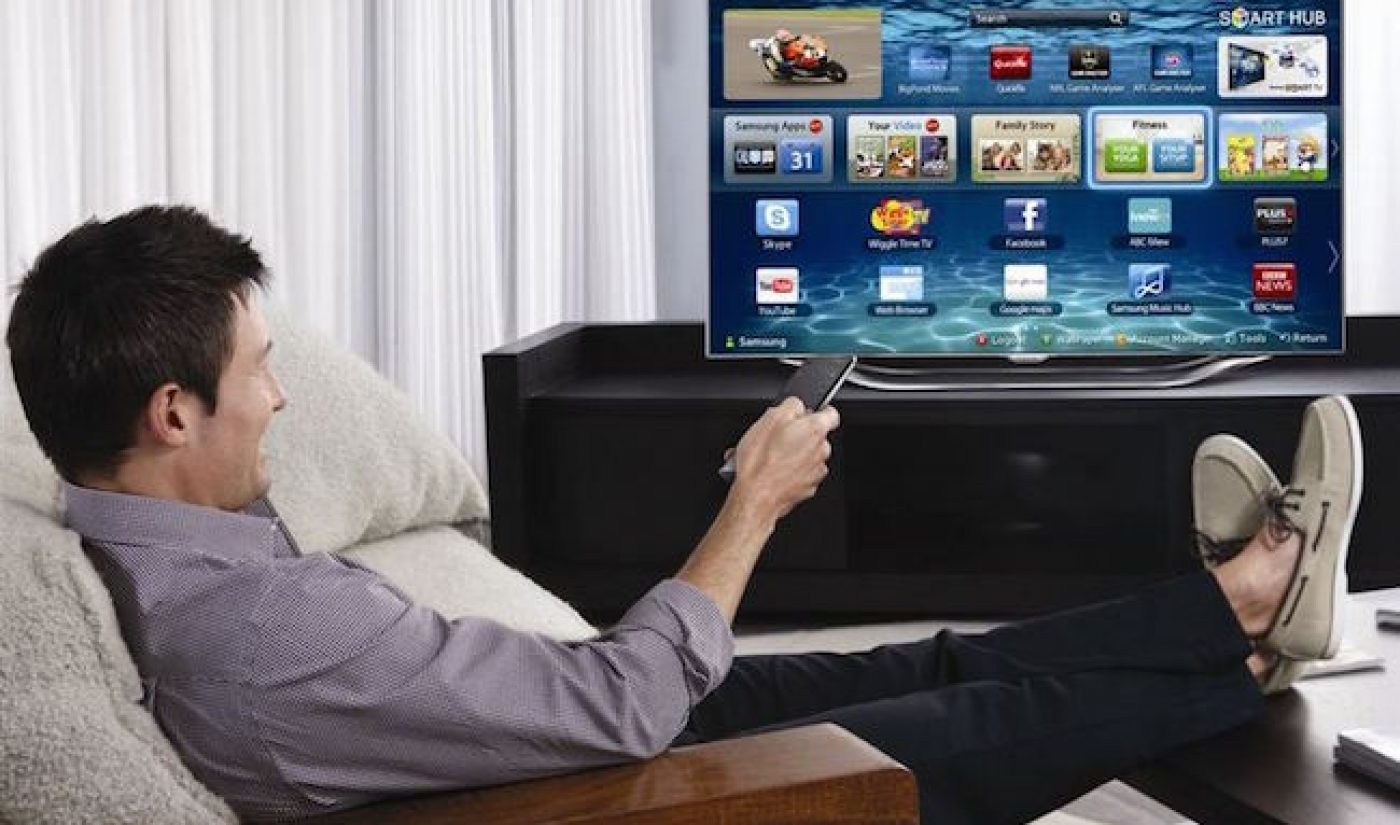The word “TV” has two very different meanings that video publishers should take care not to confuse with one another—the device vs. the programming.
Much of the debate over “cord cutting” and “over-the-top” distribution is concerned with the latter. But the former – the device – remains an important and critical component of any video application strategy.
Yet with all the current focus on mobile and tablet apps, the potential for TV apps is too often an afterthought. Now, I’m all for supporting mobile apps. ComScore studies show roughly 60% of digital media consumption takes place by way of mobile, with the majority of that coming by way of mobile applications.

Subscribe for daily Tubefilter Top Stories
But ComScore also points out two things that should be of concern to anyone who focuses exclusively on mobile apps:
- While at least one-third of smartphone owners download at least one app a month, more than two thirds don’t download any apps a month. Zero.
- Almost all of the popular downloaded apps (and the vast majority of the ones contributing to the usage figures mentioned above) are not video apps. Only Netflix and YouTube appear in the list of the Top 25 Most Popular Mobile Apps in America.
So while mobile and tablet apps are not only new and sexy, but also necessary, they should not be the only focus of any video publisher. Just consider all the activity taking place in just the last month around OTT opportunities.
AT&T and the Chernin Group recently teamed up to invest some $500 million in both on-demand and streaming video services. It’s notable not only for the quantity of the money involved, but the respective competencies of the partners. Chernin is a content company that brings its majority stake in VOD service Crunchyroll to the table, while AT&T represents the distribution end through it’s nationwide mobile and broadband network.
Another content provider and network carrier also recently joined forces in the form of A&E and Dish Network, under which A&E is adding OTT streaming rights to its content deal with Dish. This includes all A&E Channels – like History, Lifetime, and so on – across all Internet connected devices (and not just TVs).
Even the set-top box makers—the “top” in “over-the-top” delivery method that we’re discussing here—are getting in the digital game. Arris is adding an app store for third-part content providers called “Arris Market” designed to mix OTT content with live video as another “channel” of sorts. In an interesting twist, the engine behind this service, a startup called Wurl, displays the programming information of multiple apps in aggregate, so users can browse by subject or title across all possible entertainment options rather than deep diving into each individually.
What’s driving all these deals and investment? Well, we are, through increased usage of OTT services.
According to Strategy Analytics, the market for OTT video in North America will increase 21% this year to $10.7 billion, and revenue will double 2013 levels to $18 billion by 2019. The average broadband user will spend $29 on OTT services this year, up 18% over last year, and will spend up to $44 by 2019.
Even the leaders in the mobile music market are turning their attention to the TV. Streaming music service Spotify, which has amassed some 10 million subscribers worldwide primarily through it’s mobile phone app, just launched its first smart TV app through a deal with Phillips. Not only can Spotify subscribers play their music through the TV, but they can use their phones as the remote for doing so.
If even music services are interested in the TV, it’s only natural for video app providers to be there as well. After all, it has a high-definitions screen that’s only growing in size and connectivity – all things that have historically led to a pleasurable viewing experience.
The problem, if you can call it that, is that the perception of TV the device is still mixed with that of TV the business model. One is getter more advanced by the day, while the other struggles for relevance. But some day soon, we’ll all view our TVs as differently as we view our mobile phones today. Mobile phones were once thought of as a device to make phone calls. The iPhone and the advent of the app ecosystem changed that forever.
The video economy revolution that began on web browsers and evolved to mobile/tablet devices will soon come full circle back to the original device that got us all hooked on moving picture programming in the first place—the TV.
 Frank Sinton is the Founder and CEO of Beachfront Media, a video technology company that enables the distribution and monetization of video across all screens. Beachfront’s Builder platform enables any YouTube channel to create & monetize an App for iPhone, iPad, Android, and Connected TV. For More information, you can visit BeachfrontBuilder.com or follow along on Twitter at @beachfrontmedia or @fsinton.
Frank Sinton is the Founder and CEO of Beachfront Media, a video technology company that enables the distribution and monetization of video across all screens. Beachfront’s Builder platform enables any YouTube channel to create & monetize an App for iPhone, iPad, Android, and Connected TV. For More information, you can visit BeachfrontBuilder.com or follow along on Twitter at @beachfrontmedia or @fsinton.








